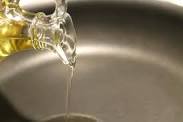Below is an excerpt from an email sent from the California Olive Oil Council to its members. This is excellent news because it will greatly reduce the amount of mislabeled olive oil on supermarket shelves in the US.
On Wednesday, April 28, 2010, standards for olive oil were published in the
USDA Federal Register. The standards will take effect October 24, 2010.
This is an historic achievement for the California olive oil industry as
well as consumers and retailers.
The petition, filed by the California Olive Oil Council in August 2005,
sought to set in place standards for grades of olive oil in the United
States, especially extra virgin. Heretofore, the absence of federal
standards allowed some unscrupulous importers to flood the US market with
mislabeled oils and misleading claims.
The standard will:
* Provide legal reference definitions for any government agency that takes
enforcement action against mislabeling
* Provide buyers in commerce with a common language of clearly defined US
grades of olive oil
* Serve notice to unscrupulous importers that the United States will no
longer be a haven for mislabeled low grades of olive oil or other oils
claiming to be olive oil
* Raise public awareness of the differences between extra virgin and other
grades of olive oil
* Inform the consumer by including taste (organoleptic) as well as chemical
testing requirements for olive oil
* Become the foundation on which an infrastructure of grading and testing
can be built


